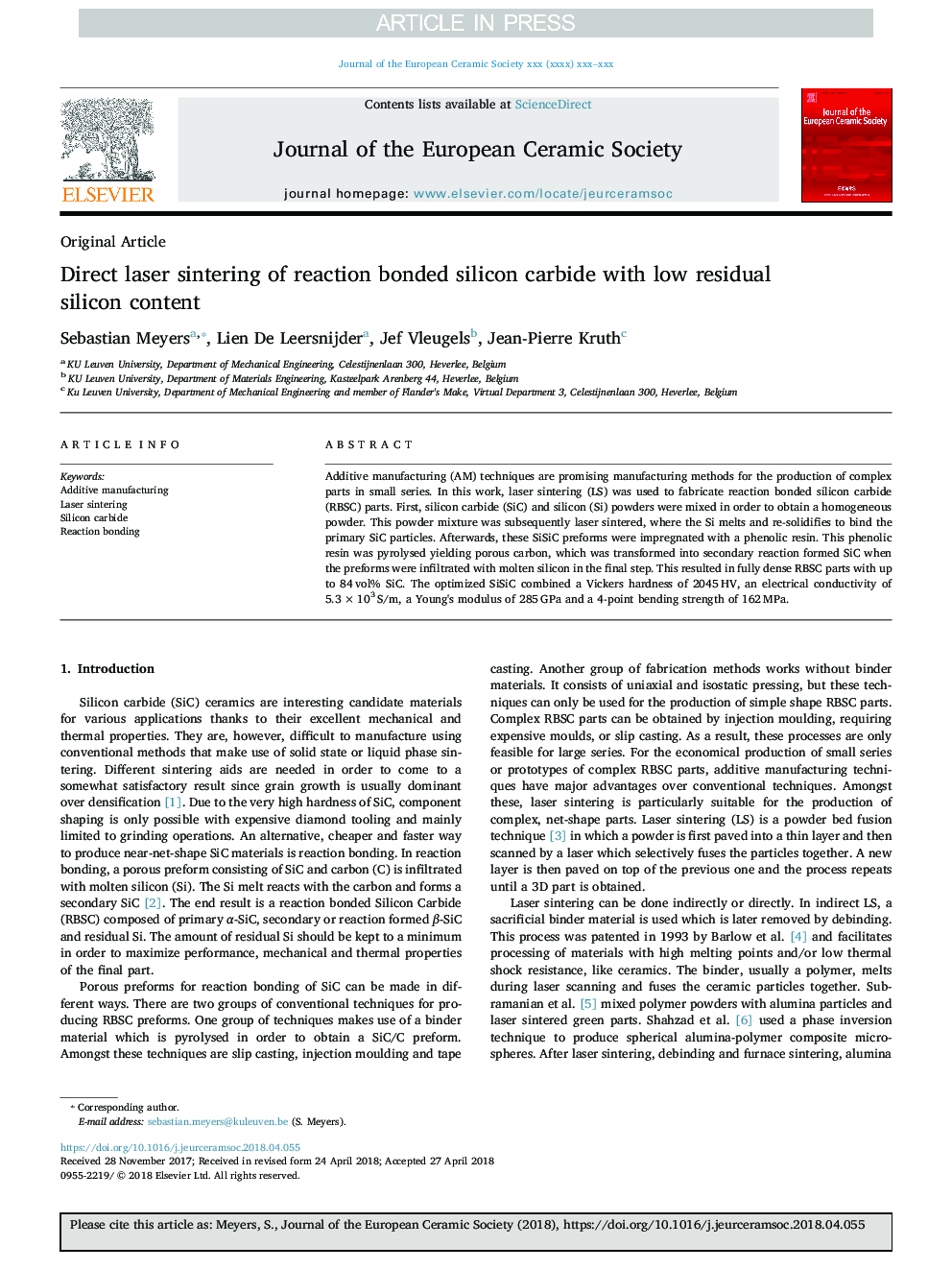| Article ID | Journal | Published Year | Pages | File Type |
|---|---|---|---|---|
| 7897885 | Journal of the European Ceramic Society | 2018 | 9 Pages |
Abstract
Additive manufacturing (AM) techniques are promising manufacturing methods for the production of complex parts in small series. In this work, laser sintering (LS) was used to fabricate reaction bonded silicon carbide (RBSC) parts. First, silicon carbide (SiC) and silicon (Si) powders were mixed in order to obtain a homogeneous powder. This powder mixture was subsequently laser sintered, where the Si melts and re-solidifies to bind the primary SiC particles. Afterwards, these SiSiC preforms were impregnated with a phenolic resin. This phenolic resin was pyrolysed yielding porous carbon, which was transformed into secondary reaction formed SiC when the preforms were infiltrated with molten silicon in the final step. This resulted in fully dense RBSC parts with up to 84â¯vol% SiC. The optimized SiSiC combined a Vickers hardness of 2045â¯HV, an electrical conductivity of 5.3â¯Ãâ¯103â¯S/m, a Young's modulus of 285â¯GPa and a 4-point bending strength of 162â¯MPa.
Related Topics
Physical Sciences and Engineering
Materials Science
Ceramics and Composites
Authors
Sebastian Meyers, Lien De Leersnijder, Jef Vleugels, Jean-Pierre Kruth,
